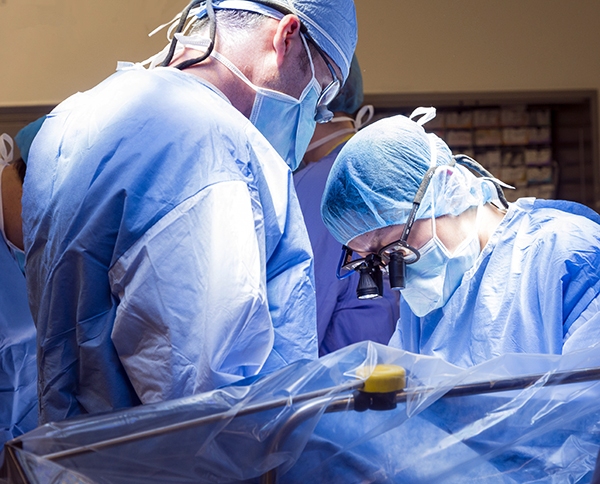Purpose

Pulmonary thromboendarterectomy (PTE) is a surgical procedure to remove blood clots blocking the pulmonary arteries – the vessels which carry blood from the heart to the lungs. Removing clots allows the right side of the heart to work properly again, allows blood to reach all parts of the lungs, and improves oxygen delivery.
Blood clots can form in the veins of the body, usually the veins of the legs. If they break loose, they are called emboli. The emboli are swept by the blood through the veins up to the heart. The right side of the heart pumps blood to the lungs where the emboli become lodged in the branches of the pulmonary (lung) arteries.
Emboli in the pulmonary arteries can cause several problems. If enough of these arteries are blocked, the amount of oxygen delivered to the blood is decreased. These blockages in the arteries in the lungs also make it harder for the right side of the heart to pump properly. The pressure in the blood vessels in the lungs increases which results in pulmonary hypertension.
The right ventricle of the heart must then work harder to pump blood through the partly blocked pulmonary arteries. Over time, the right ventricle gets bigger and thicker. If the heart is stressed too much, heart failure can occur.
Description
- You will need to undergo several tests in the hospital before the procedure. These include CT scan, echocardiogram, angiogram, blood tests, chest X-ray, and MRI.
- The procedure will be thoroughly explained to you and your family.
- You will be asked to sign a consent form. This is a good time to ask any additional questions you may have. Consent is required before the procedure is performed.
- You will be taken to the Cardiac Operating Room.
- General anesthesia will be used, and you will remain unconscious for the entire operation.
- Incisions (cuts) are made through your chest and breastbone to allow the surgeons access to the heart.
- You will be connected to a heart-lung machine (also called a heart-lung bypass machine) to take over your heart’s job of pumping oxygenated blood to the rest of your body during the surgery.
- Once the heart-lung machine is pumping blood, your body is cooled to a temperature far below normal. This makes it possible to temporarily and safely stop the circulation of blood without damaging cells in the body.
- When the heart-lung machine is stopped, blood will stop flowing through the blood vessels. The surgeon then opens and removes the clots and any built-up plaque from the pulmonary arteries. Depending on how many clots need to be removed, the heart-lung machine may need to be started and stopped several times.
- The heart-lung machine is restarted, and your body is warmed back up to a normal temperature.
- After your body temperature returns to normal, the heart-lung machine is removed and the heart may need to be started with a small electrical shock.
- You will need to stay in the Cardiac Surgery Intensive Care Unit (CSICU) for three to ten days. Some patients may be kept unconscious for several days to allow the lungs to begin to heal.
- A breathing tube is kept in place for two to seven days, or possibly longer.
- The patient is then moved from CSICU to a regular hospital room. The average hospital stay after a PTE is two weeks or more.
Patient instructions
Extensive instructions for patients, including how to prepare for and what to expect after surgery, are available in the Pulmonary Thromboendarterectomy Patient Guide.

